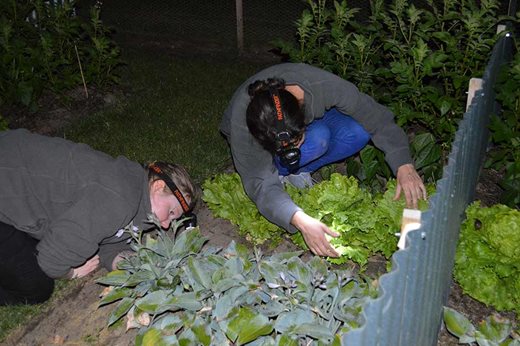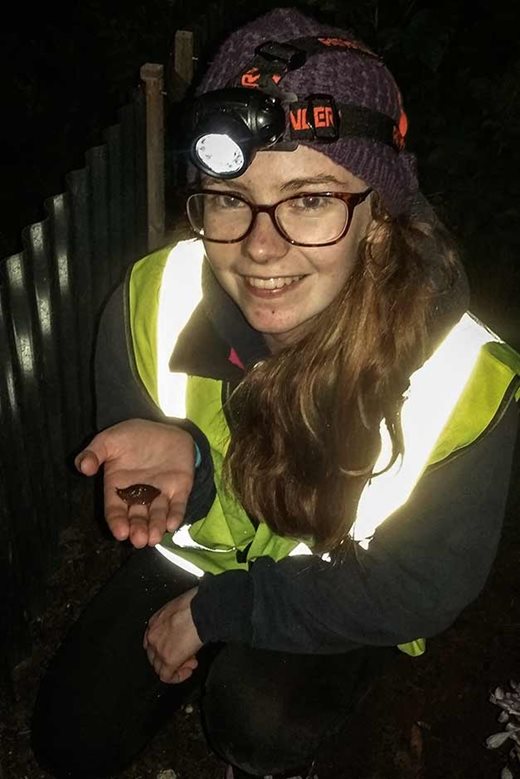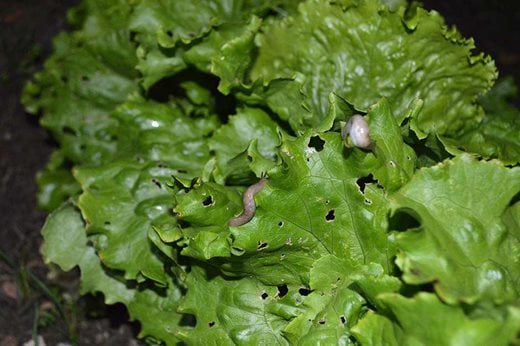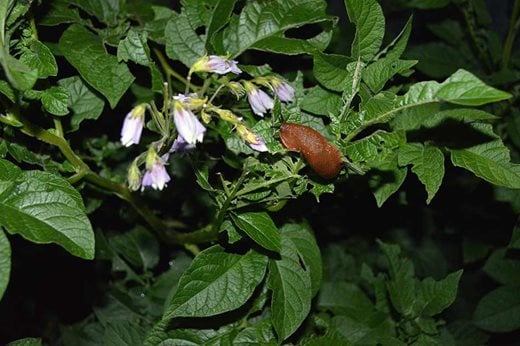A dedicated band of slug hunters braves rain and darkness to uncover the secret life of gastropods
 As part of the Integrated Gastropod Management project, we were interested in seeing if different types of slugs and snails could be found feeding on the six control treatments we were testing.
As part of the Integrated Gastropod Management project, we were interested in seeing if different types of slugs and snails could be found feeding on the six control treatments we were testing.
This is particularly important for the nematode treatment as snails are usually unaffected (they don’t go underground in the daytime as slugs do). Would the treatments cause noticeable reductions in slug and snail numbers, and would we see some species being more affected than others?
Slugs and snails do most of their feeding at night, so I had to order some head torches and plan some night-time slug hunts... Head torches are essential – two hands are needed for slug rummaging!
W e recruited a summer student, Lizzie, to help with this and to answer an additional question; do different species of gastropods feed on different plants? In the first year of the study we found that nematodes worked well on the daffodils and lettuces, but not so well on the hostas and beans. Could this be because different species of gastropod were feeding on the plants – and they might not all be affected equally by the nematodes? The sun sets pretty late in summer time so we couldn’t get started until at least 21:30. The gardens are a very different experience in the darkness, with paths feeling much longer and trees much taller than in the daytime. It is, of course, very quiet at night and even the A3 near our Wisley plots was an intermittent hum instead of the roar it is in the daytime.
e recruited a summer student, Lizzie, to help with this and to answer an additional question; do different species of gastropods feed on different plants? In the first year of the study we found that nematodes worked well on the daffodils and lettuces, but not so well on the hostas and beans. Could this be because different species of gastropod were feeding on the plants – and they might not all be affected equally by the nematodes? The sun sets pretty late in summer time so we couldn’t get started until at least 21:30. The gardens are a very different experience in the darkness, with paths feeling much longer and trees much taller than in the daytime. It is, of course, very quiet at night and even the A3 near our Wisley plots was an intermittent hum instead of the roar it is in the daytime.
For one of our slug hunts Lizzie [looking cheerful about slugs, despite it being 3am] and I decided to see if we would see any new slugs and snails in the time before dawn, as well as our normal time after dusk. This required extra layers of clothing and a ‘lunchtime’ trip to a big service station, the only place offering hot food at 2am!
We went out on six slug hunts in total, three at Wisley and three at Harlow Carr. Two of the Harlow Carr and one Wisley slug hunt happened in the rain – great for slugs, a bit uncomfortable for the slug hunters. One of my latest investments, waterproof clipboards came in very handy.
The number of slugs counted was very variable. The highest number of slugs we saw in one plot (2.6m x 1m) was 34 but on that same night some plots had 0! There were some patterns, the most obvious of which is many more gastropods at Harlow Carr than Wisley. Unsurprising as the weather is more slug-friendly in North Yorkshire. It seems like lettuce was the preferred plant within each plot, especially for Deroceras reticulatum, the grey field slug. We also saw lots of large Arion slugs (a group of three species that are hard to tell apart) feeding on the foliage of the potato plants, but it’s hard to predict how this will translate to damage on the tubers.
 [Deroceras reticulatum, a tiny grey slug with a big appetite
[Deroceras reticulatum, a tiny grey slug with a big appetite

One of the large Arion species climbing high to nibble potato foliage.]
Over 750 slugs were counted, from 14 species. Lizzie is doing some analysis right now, and will write a report before she heads back to Royal Holloway for her final year of uni.
This winter I will be analysing what we found in combination with all the data we have been gathering on damage to the plants. The final results will be submitted to a scientific journal and will be available for all to see next year.

